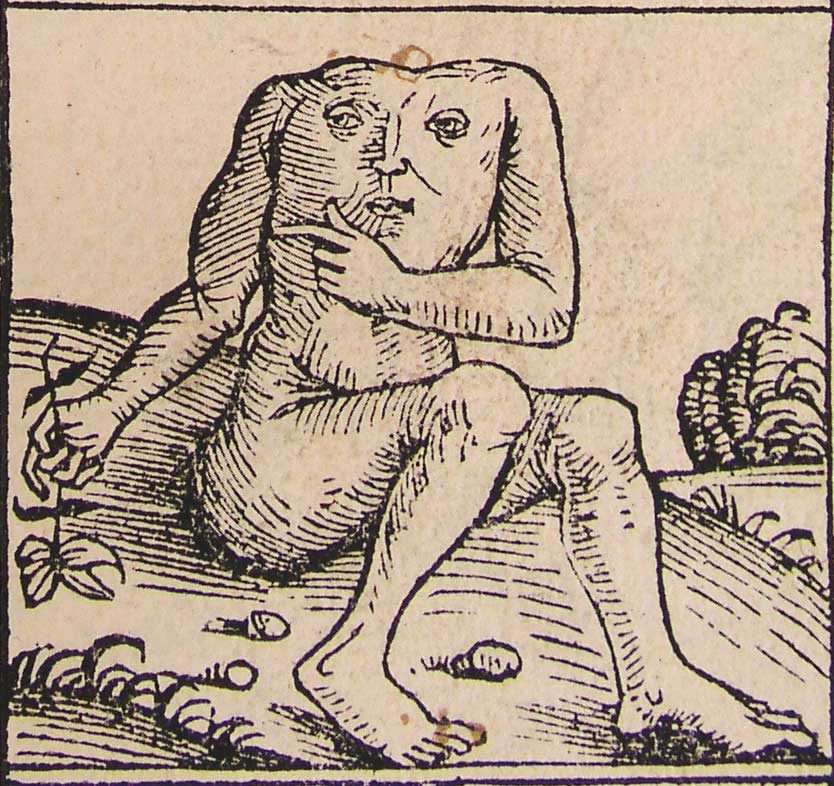Can You Spot the Monsters in This Medieval Map of the World?
The Psalter World Map, which is from c. 1260. (Photo: Public Domain/Wikipedia Commons)
The Psalter World Map, created in the 1260s, is considered to be one of the great Medieval world maps. It’s unusual by today’s standards for many reasons: the fact that east, not north, is at the top; the forested sun and moon; the dragons holding the globe up at the bottom. But there is one image in the map above that is stranger than the others.
Tilt your head to the left, get in close, and you’ll see this:

The line-up of gruesome men is located near Africa. If you look carefully, you’ll find that two of them are headless—they have faces, but said faces are located in their chests.
These monsters were based off the writings of Classical authors such as Pliny the Elder. In The Natural History, penned in 77 AD, Pliny wrote of the members of a North African tribe who were “said to have no heads, their mouths and eyes being seated in their breasts.” Over 1500 years later, big-shot authors were still talking about these chest-faced men. In Othello, Shakespeare wrote “of the Cannibals that each other eat/The Anthropophagi, and men whose heads/Do grow beneath their shoulders.”

An illustration of a headless man, or blemmyae, from the 15th-century Nuremberg Chronicle by Hartmann Schedel. (Photo: Public Domain/Wikipedia Commons)
Whether the headless men on the Psalter map are meant to symbolize the variety of God’s creatures, or if they were placed at the edge of the map to symbolically remove them from God’s world, is a matter of debate. To the Christians of medieval England, the headless men were particularly interesting for the fact that they tested their ethics and credulity. Alixe Bovey, a medievalist at the British Library where the Psalter map is held, writes: “monsters were often used to define boundaries and to express a distinction between morality and sin—or conformity and nonconformity.”
Though it might seem as though the headless men were used to inspire fear, their Western viewers were far removed from them. Bovey writes, “such monsters were exciting and exotic, but since they were located at the periphery of the known world, they did not seem to cause their medieval audience much anxiety.”
Map Monday highlights interesting and unusual cartographic pursuits from around the world and through time. Read more Map Monday posts.













Follow us on Twitter to get the latest on the world's hidden wonders.
Like us on Facebook to get the latest on the world's hidden wonders.
Follow us on Twitter Like us on Facebook